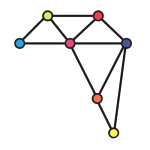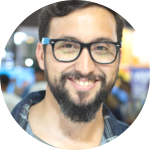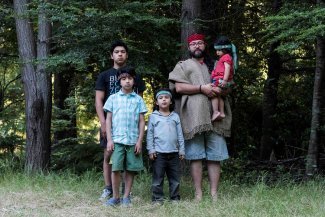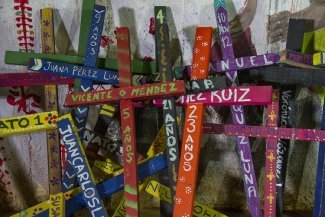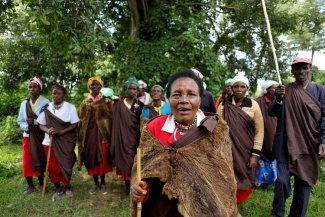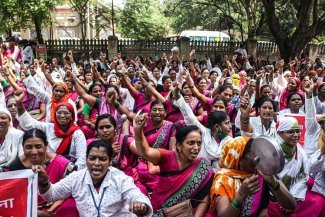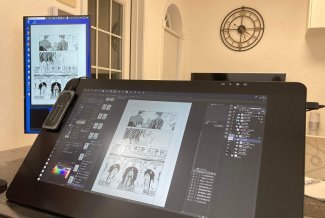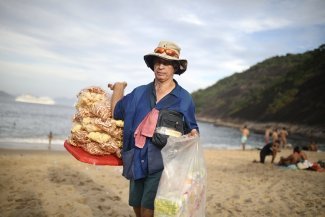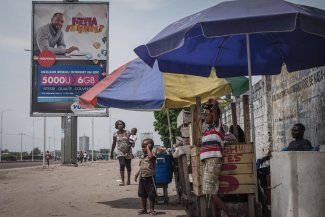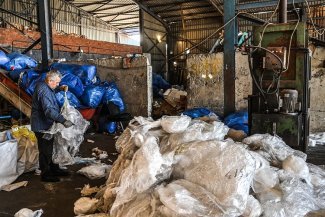The conflict in southern Chile and Argentina, involving political radicalisation and violence, shines a spotlight on an existential problem in Latin America – what is the place of the millions of historically invisibilised Indigenous peoples?
Mid-morning on 15 March, on her fourth day as interior minister under the newly inaugurated president Gabriel Boric, Izkia Siches was heading off with a convoy to meet Mapuche representatives in southern Chile. It was her first official activity and it was literally a baptism of fire: she was met with gunshots in Temucuicui, 690 kilometres south of Santiago.
“If they want to come in like this, they are very mistaken. We can receive Siches and Boric if it is to talk about the restitution of territories,” said Víctor Queipul, the ‘lonko’ or highest authority of the area. In response, the young Chilean president declared a state of emergency and sent troops – as his predecessor Sebastián Piñera did when he was in office – to guard the Southern Macrozone, which comprises the Araucanía region and the provinces of Arauco and Biobío.
The Mapuche community is the largest of the original peoples in Chile – almost a million people consider themselves part of this culture. They are also present in Argentina, although in smaller numbers. Like the rest of their Indigenous brothers and sisters in the Americas, they have long been fighting to reclaim their rights, which have historically been curtailed.
Having broken off relations with his forerunner Piñera, the Mapuche had high hopes for Boric, but three months on and the tension has not only returned, but the violence in the area is the worst it has been for two decades. There have already been seven fatalities so far this year, more than in the whole of 2021. Daily newspaper La Tercera has recorded 24 deaths since 2002 due to rural violence in La Araucanía, 17 of them in the last three years.
What is behind this escalation in violence by people who consider themselves part of an Indigenous community? And why have southern Chile and to some extent southern Argentina become the hotspots of an existential problem in these countries – the question of what to do with Indigenous heritage?
What place do Indigenous peoples occupy in 21st-century Latin America?
The Indigenous population of Latin America occupies a large place in demographic terms, especially in Bolivia, Ecuador, Mexico, Guatemala and Peru, where more than 90 per cent of the region’s original population is concentrated. In these countries in particular, the Indigenous movement began to develop in the 1990s, at the time of the commemoration of the 500th anniversary of the ‘discovery of America’, which they turned into a symbol of resistance. In Bolivia and Ecuador, the movement led to the inclusion of the concept of a plurinational and intercultural state their constitutions in these countries’ constitutions.
Cultural development by peoples such as the Maya in Mexico and Guatemala, the Quichua in Ecuador, the Aymara in Peru and Bolivia, and the Mapuche in Chile and Argentina, had already been underway for centuries when the Spanish reached the Americas in the late 15th century. Today, they account for just 8 per cent of the population in Latin America, but make up 14 per cent of those who are poor. This is the source of a fuse ignited a few decades ago that is now threatening to trigger a major explosion in the far south of Chile and Argentina.
Deaths linked to the violence of radicalised groups of Mapuche origin in these regions are on the rise. So too are acts of sabotage against the companies operating there, such as the attack that cost the life of Pablo Marchant, one of the masked youths who used high-calibre firearms to attack a forestry company in Carahue on 9 July 2021. Marchant was shot dead by Chile’s Carabineros police force, working alongside the company’s private guards to fight off the attack. Days later it became known that the young man, who had no Mapuche family ties, was a member of the Arauco Malleco Coordinating Group (CAM), one of the paramilitary organisations fighting for the autonomy of the Mapuche people from the Chilean state. The group has claimed responsibility for a series of arson attacks in the area. “We, as the CAM, are not going to negotiate or compromise with the historical enemy. We are part of the Mapuche revolutionary movement. We are fighting against the capitalist system and against the colonial state,” declared its spokesperson, Juan Pichún.
A similar statement was made by another group, Weichan Auka Mapu (WAM), in a video posted on YouTube at the end of November 2021, days before the elections that brought Boric to power. In it, some 30 masked men armed with weapons of war reaffirmed their “revolutionary commitment to acts of sabotage against capitalist interests”.
With military troops deployed in the area and the groups radicalised under the Mapuche flag threatening to destabilise the institutions, Araucanía has become a powder keg that is keeping President Boric and his government on high alert. A similar plight is faced by his Argentinean counterpart, Alberto Fernández. In areas such as Bariloche, a tourist paradise that attracts skiers from the world over, every winter, lives have also been claimed as a result of the Mapuche issue and the violence disguised as the struggle for rights.
José Bengoa is one of the Chilean historians who has most widely studied the Mapuche people. He attributes the reasons for the conflict to “forestry expansion” by logging companies. He also points to an “enlightened Indigenous youth” who, unlike their ancestors, have received a twofold education – of traditional teachings and modern Western culture.
Added to this is the impact of internet access, travel and globalisation, which has also reached the communities, he says. Armed with these cultural resources, the new generations of a traditionally combative people have hardened their position with regard to the “white” states created in Argentina and Chile after independence from Spain around 1810.
“The state does not pre-exist any original people,” Orlando Carriqueo, a Mapuche ‘werken’ or leader in Río Negro, Argentina, tells CONNECTAS. “The state imposes the violence, not the communities. It does so when it uses force, as it has done over the last 140 years with the appropriation of territories, the displacement of communities, the flooding of their lands and their relocation so that dams can be built while they don’t even have electricity. Or when it grants logging companies access to forests in which communities are living,” he says. “These are examples that show that the violence is imposed by the state and that the victims are the communities.”
Carriqueo explains that in spite of all this, the Mapuche are not at war with the state but are seeking recognition based on respect. “Because until now they have had a culture imposed on them, an Argentinian identity, a flag and a homogenisation of society that is not homogeneous. That’s why we have territorial disputes, and that is part of the discussion that needs to be tackled,” he says.
On the other side of the Andes, in Chile, the violence has reached unprecedented levels. But for Humberto Toro, the presidential delegate in the Arauco province, the situation is not a result of ancestral demands but, rather, of criminal organisations utilising the Mapuche issue to conduct illegal business. “The groups that have become the most vocal have a territory to hide in and a cause that they use to try and justify their illicit activities, the Mapuche cause. And they are using this historic struggle as a cover for their illicit activities,” says Boric’s top official in the southern province.
The Indigenous population of Chile is 13 per cent (in Argentina, it is just two per cent) and, despite what sectors linked to the political right describe as “a new Chiapas”, the country has been making progress in its recognition of the rights of Indigenous peoples. The best example of this is the recently formalised proposal for a new constitution with a strong Indigenous component in a historically conservative country. The Mapuche’s inclusion in the constitution is not, however, enough to surmount a conflict with historical roots, a conflict “so badly handled that it has generated much more violent consequences”, Salvador Millaleo, Boric’s top advisor on Mapuche issues, told the Spanish daily El País. Millaleo did not last long in the post – he resigned at the end of April as coordinator of Indigenous Affairs following further violent incidents in the south.
Although the new leftist government in Chile has not yet achieved anything, it is optimistic about the Mapuche issue and is trying to separate the wheat from the chaff – or, the organisations sabotaging negotiations through violence, from the communities that want to engage in talks with the state. “So that we are genuinely able to build a country in which people have the right to travel and live peacefully anywhere, which is not currently the case in the province of Arauco,” says Toro. He adds: “The acts of violence have nothing to do with the Mapuche cause.”
Be that as it may, the indigenist demands have roots that go far deeper than the official explanations and can be traced back to a narrative that is deeply anchored in the collective consciousness, namely that what happened on the American continent is in fact a historical disaster that it is not too late to remedy. How to reconcile this view with the existence of modern states and their non-Indigenous populations – although they may have some trace of Indigenous blood in their veins – is a question that remains unanswered for the Latin America of the 21st century.



